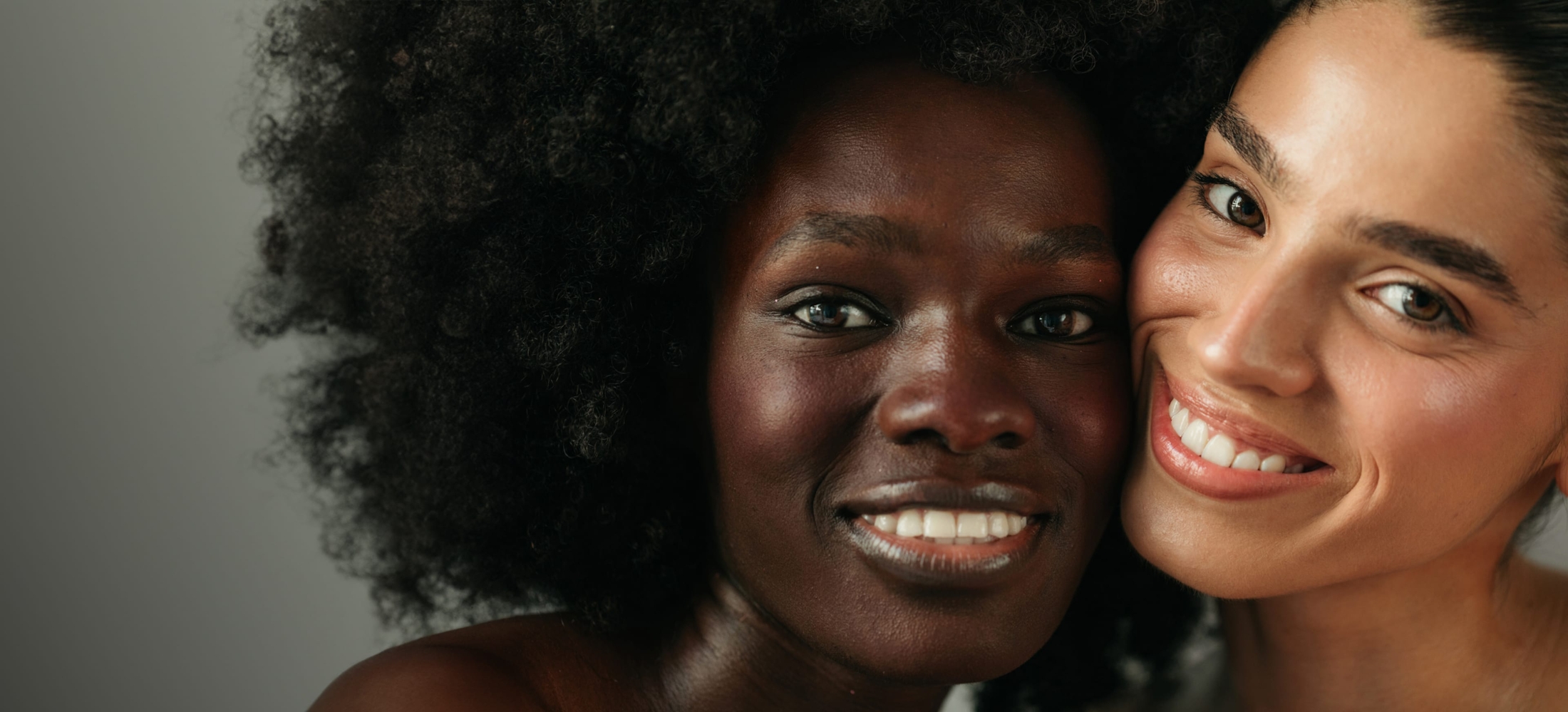
Do you have wrinkles or acne and want to create a skincare routine, but don't know where to start? Have you followed your current skincare routine for months, but haven’t seen any results? Are you overwhelmed by the number of products on the market and don’t know what differentiates the good from the bad? We can help! Creating the best skincare routine becomes more straightforward once you know your skin type, what steps to incorporate, and what ingredients to look for.
To start, you should determine what skin type you have. There are five main skin types: oily, dry, combination, sensitive and normal skin. Oily skin has a shiny or greasy appearance due to a higher production of sebum, skin’s natural oil. Blackheads, enlarged pores, and breakouts are common concerns for those with oily skin. In contrast, dry skin doesn’t have enough oil, leading to peeling, cracking, or flaking. Combination skin displays two or more characteristics in different areas of the face. It is common for those with combination skin to have oiliness in their T-zone (forehead, nose, and chin) with dryness in their cheeks. Sensitive skin has a heightened reactivity to stressors such as skincare products, which may manifest as redness, itching, and discomfort. Normal skin refers to overall well-balanced skin.
A simple way to determine your skin type is to press a blotting paper against different areas of your face and examine the paper in the light to see how much oil was absorbed. An oiler sheet indicates oily skin, little to no oil points to dryer skin, more oil in your T-zone than the rest of your face is likely combination skin, while minimal oil throughout your face is likely normal skin.
After determining your skin type, you can begin to build your routine. Your first decision is to choose which steps to incorporate into your routine. The three steps that should be included in any skincare routine are cleansing, moisturizing, and applying sunscreen. Beyond that, you may choose to target specific facial concerns with dedicated steps (toning, serum application, spot treatments).
Once you’ve selected what steps are needed in your routine, it’s time to select the specific products to use. The wide variety of products on the market can be daunting at first, but once you know what ingredients to look for, finding the right products for you is much simpler. If you have drier skin, look for products with hydrating ingredients such as hyaluronic acid, squalene, ceramide NP, and glycerin. For oily skin types, retinol, salicylic acid, and niacinamide are beneficial. In general, rejuvenating ingredients such as glycolic acid, lactic acid, Vitamin C, E, and B3, and green tea are great to incorporate into any skincare routine. Medical grade skincare brands such as Alastin, Skinbetter Science, and ISDIN offer products with multiple targeted ingredients and are available here at New York Eye and Face. Products from these brands have higher levels of active ingredients than products purchased at the drugstore or department store, and can better cater to your skin concerns.
The next step after selecting each product in your routine is to apply them correctly. The order in which skincare products are applied is crucial for achieving the best results. The first step is to remove any makeup with a cleansing balm or micellar water. Next, use a facial cleanser appropriate for your skin type and dry your skin with a soft towel. Following skin cleansing, you may use a toner. To apply, pour a few drops into your palms or a reusable cotton pad and gently pat on your face. Exfoliating toners should be reserved for nighttime use, while hydrating formulas may be used twice a day. It’s important to avoid using an exfoliating toner at the same time as retinoids or scrubs.
After toner, the order of skincare application varies based on the product type and its ingredients. A basic rule is to apply thicker products later on in your routine. Some other products you may incorporate in your routine are serums, eye cream, spot treatment for acne, moisturizer, retinoid, face oils, and sunscreen. Eye creams and serums should be layered underneath moisturizer. Similarly, spot treatment for acne should be used at night prior to moisturizer. Retinoids (used to reduce dark spots, breakouts, and fine lines) should only be used at night after moisturizer. Any face oil should always be the last step in your routine besides sunscreen. Sunscreen is the most important step in a skincare routine, and is the final step in the morning. The ideal sunscreen is a broad-spectrum mineral SPF 30+, which protects from both UVA rays that cause skin aging and UVB rays that cause sunburn.
Now that you’ve learned what skin type you have, which products suit you, and the best order to apply each product, it’s time to invest in your products and start your new routine. Shop on our website or visit our office to purchase medical-grade skincare products for the best routine today!
To purchase our favorite medical-grade skincare products online, check out the links below:
Alastin Skincare: https://alastin.com/collections/welcome?designate-location=18259
Dr. Carniciu’s Skincare Picks: https://shopmy.us/anaiscarniciumd
For more information check out the references below:
The Do's and Don'ts of Your Skincare Routine. (n.d.). Retrieved July 25, 2022, from https://aloeattiva.com/blogs/news/meet-the-designer-backup?gclid=Cj0KCQjwidSWBhDdARIsAIoTVb3v6ORiepWSuFNpRUC6OJblyfo3BcIkGNcp4AAIi9U2eXVGYWJTVWgaAr6VEALw_wcB
Here's How You Can Determine Your Skin Type. (n.d.). Retrieved July 25, 2022, from https://www.kiehls.com/skincare-advice/how-to-determine-your-skintype.html?utm_medium=all_affiliate&utm_source=linkshare&utm_c.com&utm_keyword=PPkX79_c.b0-9RXjMr2g713sHQcjWQugWw&ranMID=36177&ranEAID=PPkX79%2Fc*b0&ranSiteID=PPkX79_c.b0-9RXjMr2g713sHQcjWQugWw
How to Build a Skin Care Routine: The Perfect 9-Step Skincare Regimen. (2021, June 7). Retrieved July 25, 2022, from https://www.masterclass.com/articles/how-to-build-a-skin-care-routine
Molvar, K. (n.d.). How to Build a Skin Care Routine. New York Times. https://www.nytimes.com/article/skincare-routine.html
12 Best Ingredients for Dry Skin. (n.d.). Retrieved July 25, 2022, from https://bestkbeauty.com/best-ingredients-for-dry-skin
Weiner, Z. (2020, February 11). Dermatologists Say the 'Big Four' Are All You Need to Beat Oily Skin. Retrieved July 25, 2022, from https://www.wellandgood.com/beauty/best-oily-skin-ingredients
Yuan, A. (2020, March 11). The Top 10 Natural, Scientifically Tested Skincare Ingredients. Retrieved July 25, 2022, from https://www.provenskincare.com/blog/the-best-natural-skincare-ingredients-proven-by-science



